Facebook unveils plans to pivot towards privacy-focused messaging. What does it mean for brands?
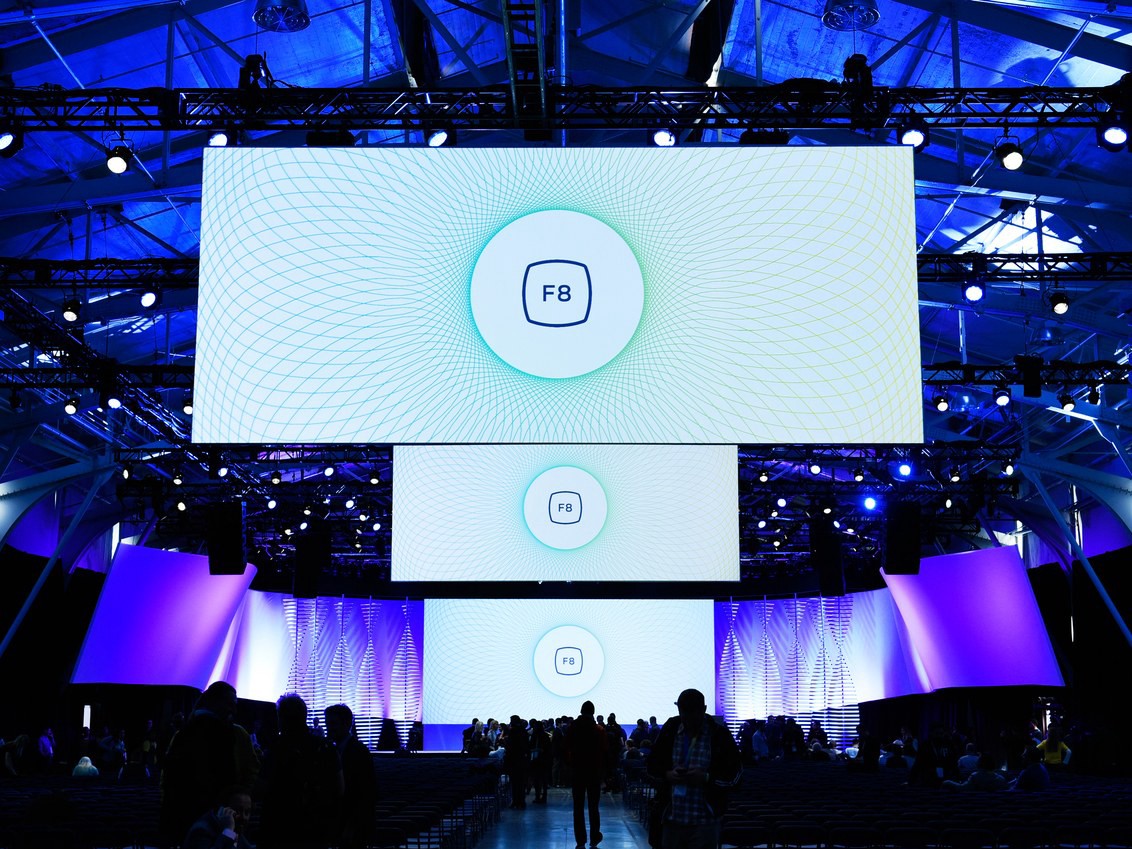
Editor’s note: This is an abridged edition of our Fast Forward newsletter on the latest announcements from Facebook and their brand marketing implications. For the full version, please contact our VP of Client Services, Josh Mallalieu (josh@ipglab.com) to send a request.
On Tuesday, Facebook kicked off its annual developer event in San Jose with a keynote address. As a follow-up to CEO Mark Zuckerberg’s recent treatise on his new vision for Facebook, the keynote was all about how Facebook plans to implement that grand vision by revamping the Facebook empire into “a privacy-focused social network built around messaging.” Specifically, this entails a refreshed design of the Facebook flagship site and app, some interesting new features added to Facebook’s trio of social messaging apps (Facebook Messenger, WhatsApp, and Instagram), as well as some updates on its AR and VR endeavors.
Taken altogether, it is clear that Facebook is also using this developer event to bolster its brand reputation and demonstrate some of its early plans to course correct. However, it is important to note that Facebook is making all these changes because they have to, for the way people use social media and our relationship with it have evolved significantly since a few years ago. With Stories surpassing News Feed posts, which are plagued by issues of misinformation and fake news, users today shows a growing preference for a more intimate, less permanent method of social sharing. And Facebook is trying to retool its main products to fit this changing user behavior.
For the foreseeable future, Facebook will remain a key digital channel and ad platform for brands to reach global consumers at scale. What will change over the next few years, however, is the new ways in which Facebook will reorganize its properties and monetize the attention they capture. Therefore, it is worth looking through some of the main announcements from F8 this year one by one to see their larger implications for brands.
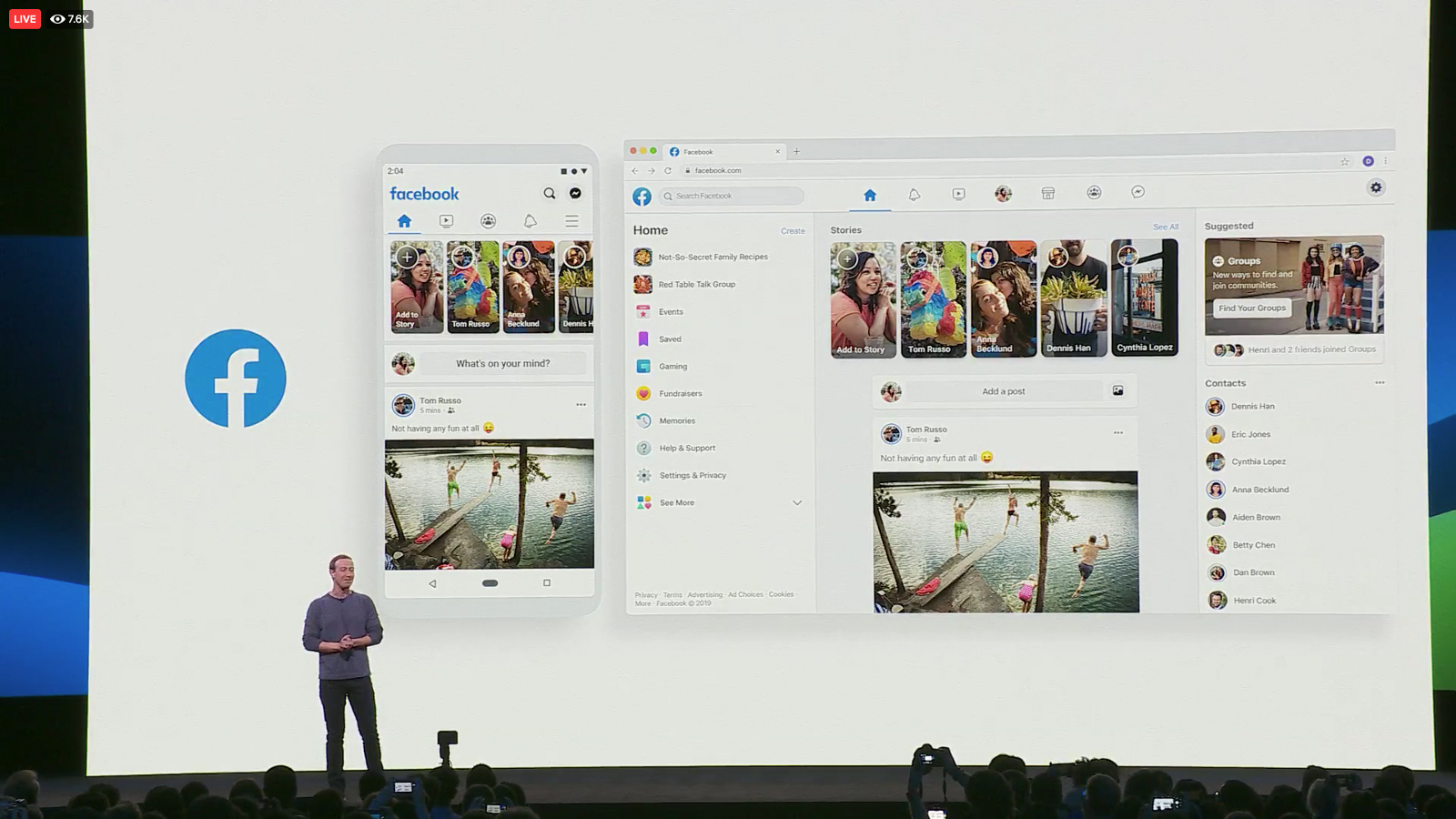
New Focuses on Groups, Events, and Stories
As part of its ongoing effort to help people make “meaningful connections” online, Facebook unveiled a redesigned Facebook app that puts Events and Groups front and center. It is worth noting that this does not necessarily mean Facebook is moving away from News Feed, which is still their most successful and lucrative product for ad placement. Instead, it is adding new ways for users to connect with smaller groups, organized around common interests or local events, where they can meet like-minded people and forge meaningful connections that translate offline. In order to better facilitate that, Facebook is also rolling out specific features tailored to each group. For example, members of a health support group will be able to submit a post to be published via the group admin so as to protect their privacy, and Groups of freelancers seeking employment will get a tool to help members submit their job applications.
This additional emphasis on Groups and Events not only helps Facebook redirect some of the user attention away from the increasingly toxic News Feed into smaller, more manageable groups, it also opens up new possibilities for Facebook’s ad targeting to go beyond the traditional demographic criteria and pulling in more granular, interest-based ways to segment their audience. The question remains how Facebook plans to properly monetize Groups and Events, since the company did not specify its plans for ad integrations, but there are clearly plenty of ways that Facebook could put sponsored ads into the post feed in Groups or sell top placements for sponsored events in the Events feed. Event-organizing apps like Meetup monetize by charging event organizers for using their platforms, which is also a way Facebook could potentially monetize the Events feature.
Another important aspect of this revamp is that stories now show up on top of the News Feed, commanding a significant space of the home page. Facebook Messenger also received a redesigned update that prioritizes stories from your closest family and friends, prominently featured in a dedicated tab planned for Messenger, in a layout akin to the Discover page on Snapchat. The ephemeral format fits well with Facebook’s new mission to focus on private messaging with reduced permanence, and its proliferation across all Facebook properties is a testimony to the strength of this format.
The emphasis Facebook is placing on stories underlines just how important the format has become to Facebook’s future. As user engagement with Facebook’s News Feed slows, stories could now take over as the main ad channel, which means brands will need to start tweaking their ad creative to better fit the stories format and figuring out the right posting frequency to best engage with users.
Doubling Down on Social Commerce
In addition to these new channels for potential monetization, Facebook is also doubling down on social commerce features to make its platform more brand-friendly and open new revenue sources across its properties. As we said in our analysis of Facebook’s new privacy-focused vision, private messages are not exactly ad-friendly environments, as any misaligned brand message would be highly intrusive in the context of a private conversation. That leaves a commerce-driven strategy, where Facebook monetize by providing businesses a platform to reach and sell directly to consumers, a more suitable approach. Indeed, Facebook mentioned during the keynote that 20 billion messages are shared between users and businesses every month across its messaging platforms, so it should be no surprise that many of the new features Facebook announced on Tuesday has to do with enhancing the social commerce capabilities of its platforms:
The new “Shopping from Creators” program will enable brands to work with Instagram influencers to unlock direct purchase opportunities. Instagram has always been on the forefront in terms of testing social commerce features, and this will no doubt further empower the rising micro-influencers and D2C brands to convert fans into shoppers.
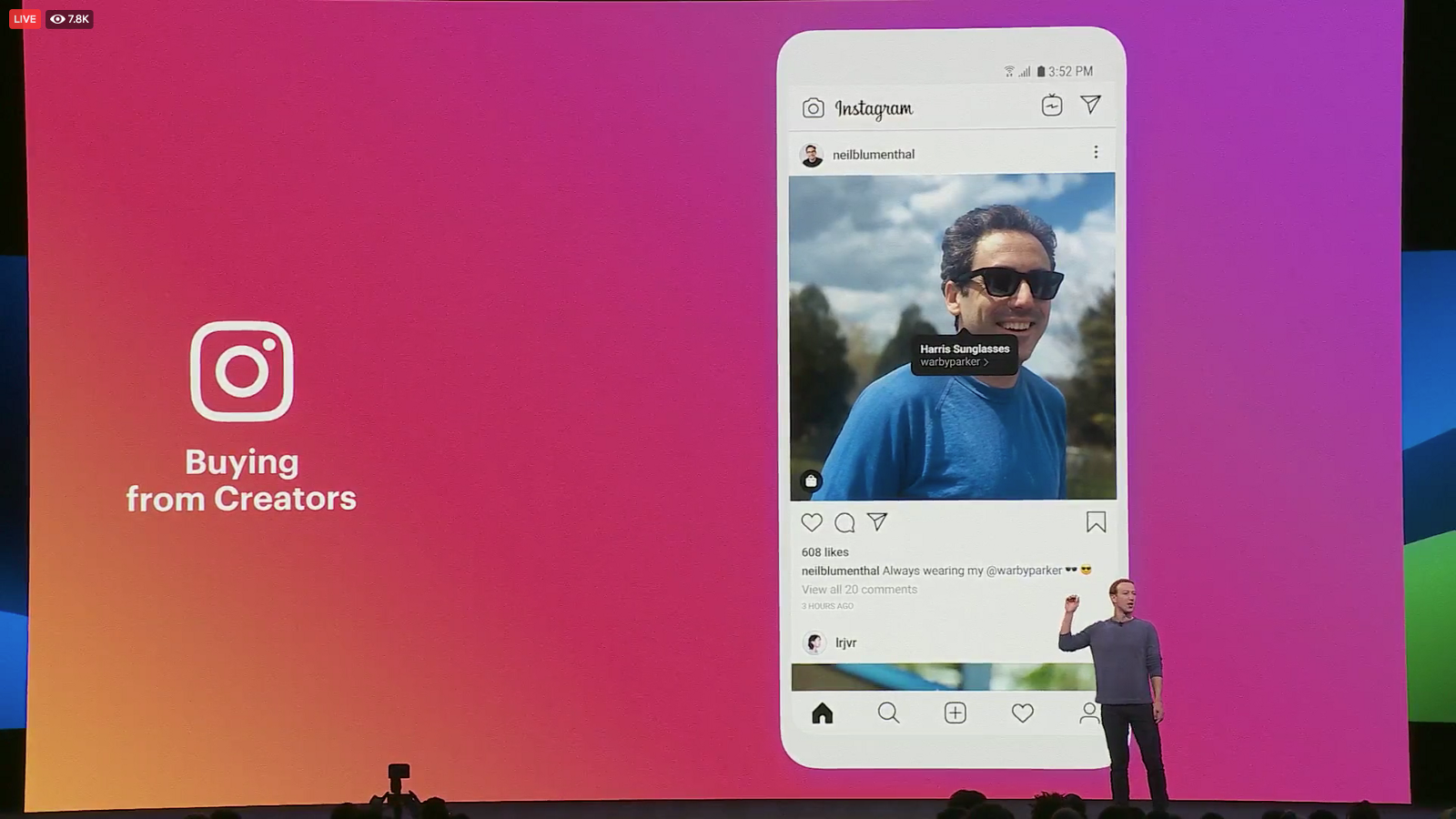
For WhatsApp, the addition of Product Catalogs to business accounts also further enriches the kind of brand-customer interaction on the globally popular messaging app, which Facebook has been somewhat slow to commercialize, but has recently started to ramp up its efforts to add business-friendly features. A pilot testing of peer-to-peer payment on WhatsApp in India showed early success and Facebook announced the roll out of payment solutions on WhatsApp in other global markets, which would further boost the customer conversion rate on the app.
A new appointment booking feature was also added to the Messenger bot platform, allowing users to book appointments via chatbots with businesses that opted in. The feature will be available for all businesses on Messenger and could spur another round of chatbot adoption among the 40 million businesses currently using Messenger to communicate with customers. In addition, a lead-generation campaign template will also be added to Messenger bots over the next few months, allowing advertisers to build new conversational interactions for their Messenger bots.
The main Facebook app will continue to build out the Marketplace tab, allowing users to make payments and handle shipping directly through the social network. Interestingly, this feature also supports groups that centers around buying and selling things. More interestingly, Facebook also mentioned it’s exploring ways to let buyers ask questions and place orders from Facebook Live streamers without leaving the live broadcast, similar to how Amazon Live uses live content to drive sales. Also, the new dedicated Events tab will also include what’s nearby, including businesses and Groups.
All these new additions share the same goal of making Facebook’s cohort of social apps more brand-friendly and ecommerce-ready, and that is certainly a smart move for Facebook to future-proof its bottom line. For brands, these new features should come in handy for running direct-response campaigns across Facebook properties. According to eMarketer’s estimation, mobile commerce sales will make up 44.7% of total US ecommerce sales in 2019, up from 39.6% in 2018, and social commerce will take up a big part of that. The latest data from Adobe shows that social commerce referral grew 110% between 2016 and 2018, with Instagram and Pinterest being the main platforms bolstering social-driven ecommerce.
As social commerce continues to grow, Facebook is set to open up its platform to brands and local businesses to connect directly with consumers. Of course, it still needs to figure out how to get people to hand over their payment information first, as it remains a major barrier for social commerce to take off in the States as it had in APAC markets like China, where mobile payments have been widely adopted. The new donation stickers in Instagram could prove to be a good way to get those credit card information from users. As mobile payment penetration still lags in the West, Facebook’s mission to make its platform more ecommerce-friendly will inevitably have to remove the friction caused by the lack of integrated payment solutions first.
Updates on AR and VR
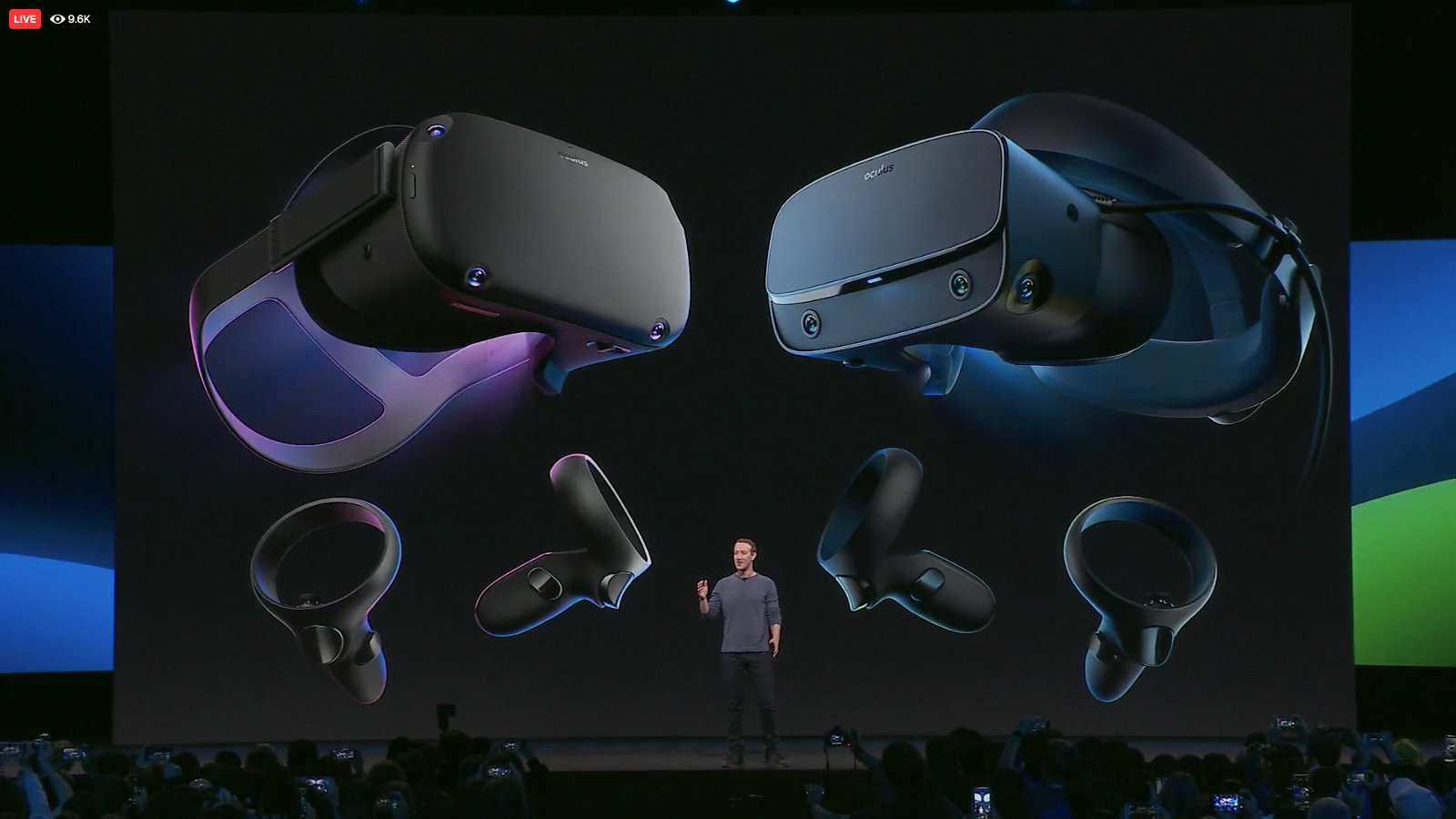
Immersive formats like Augmented Reality and Virtual Reality got relatively less stage time compared to the messaging apps. Nevertheless, Facebook made the effort to roll out new products that underscore the importance of AR and VR as it hedges its bet on the next computing platform shift. Specifically, Facebook is sticking to its strategy of using AR to make using its camera experience more fun and engaging and pushing VR to be a next-level gaming platform.
Historically, Facebook started out prioritizing VR over AR, as it bought Oculus in 2014 and has been trying in vain to get VR headsets off the ground as a mainstream product. Two new VR headsets”Š—”Šthe completely wireless Oculus Quest and the PC-powered Oculus Rift S”Š—”Šwere officially released and will retail at the same price of $399. It is not exactly a high price for the latest VR headsets, but it is not affordable enough to spur purchase interest from mainstream consumers either. Although it did introduce a new Star Wars-themed VR experience, the overall VR space still lacks the amount of must-see, quality VR content that could pique interest beyond VR aficionados. Therefore, it is understandable that Facebook is also opting to develop enterprise solutions on its VR headsets, as the enterprise solutions are a far easier sell for Oculus, and the VR industry by extension, at the moment. Microsoft’s HoloLens, a leading mixed reality headset, has been following this enterprise-first strategy to much success.
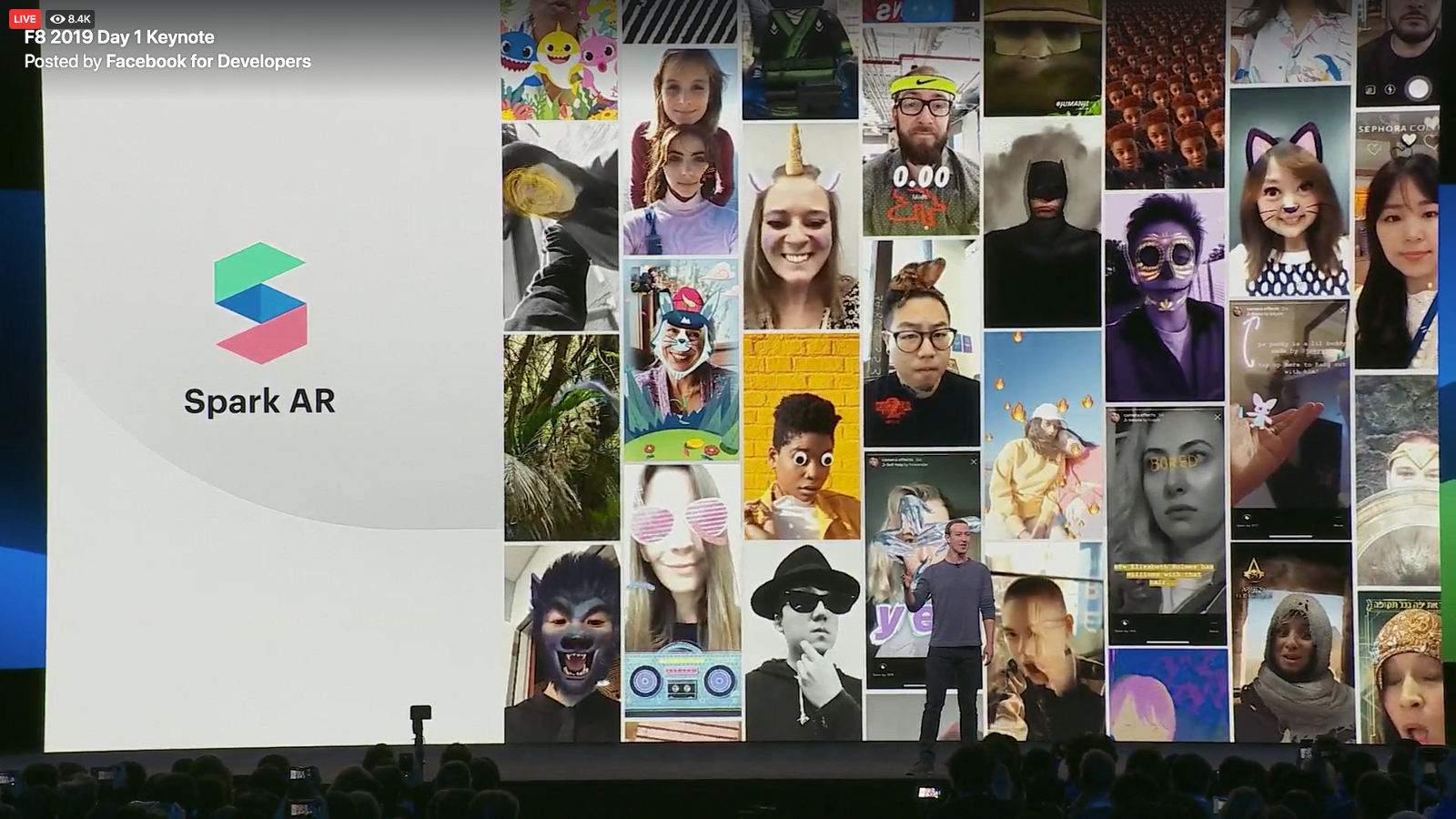
On the AR front, Facebook continues to build out its developer toolkits in order to catch up with other AR developer platforms like Apple’s ARKit and Google’s ARCore. It added Windows support to its AR platform Spark AR Studio to allow more developers to create AR filters and lenses for Facebook products, and it will also open Instagram to all AR developers this summer to allow them to create AR experiences for Instagram. The growth of stories is making AR a part of everyday communication, and that is something brands will need to master soon. According to Facebook, hundreds of millions of people use AR experiences every month across Facebook, Messenger, Instagram, and Portal, which supports real-time filters for video calls. It seems safe to assume that their recent addition of AR-enabled ads in New Feed could soon translate into sponsored AR filters and lenses across its apps too, allowing brands to further engage with Facebook users with fun, interactive experiences.
Co-Viewing Comes To Messenger
In an effort to revive user interest in Facebook Watch, its VOD service accessible via a dedicated tab in the main app, Facebook added a co-viewing feature to the Messenger app to enable users to discover and watch videos from Facebook together in real time. That means people will be able to seamlessly share a video from the Facebook app on Messenger and invite others to watch together while messaging or on a video chat. It is unclear if the video will have to be hosted on Facebook or if it would support a third-party video, such as a YouTube video. Regardless, this opens a new marketing channel for video ads and a new revenue opportunity on Facebook.
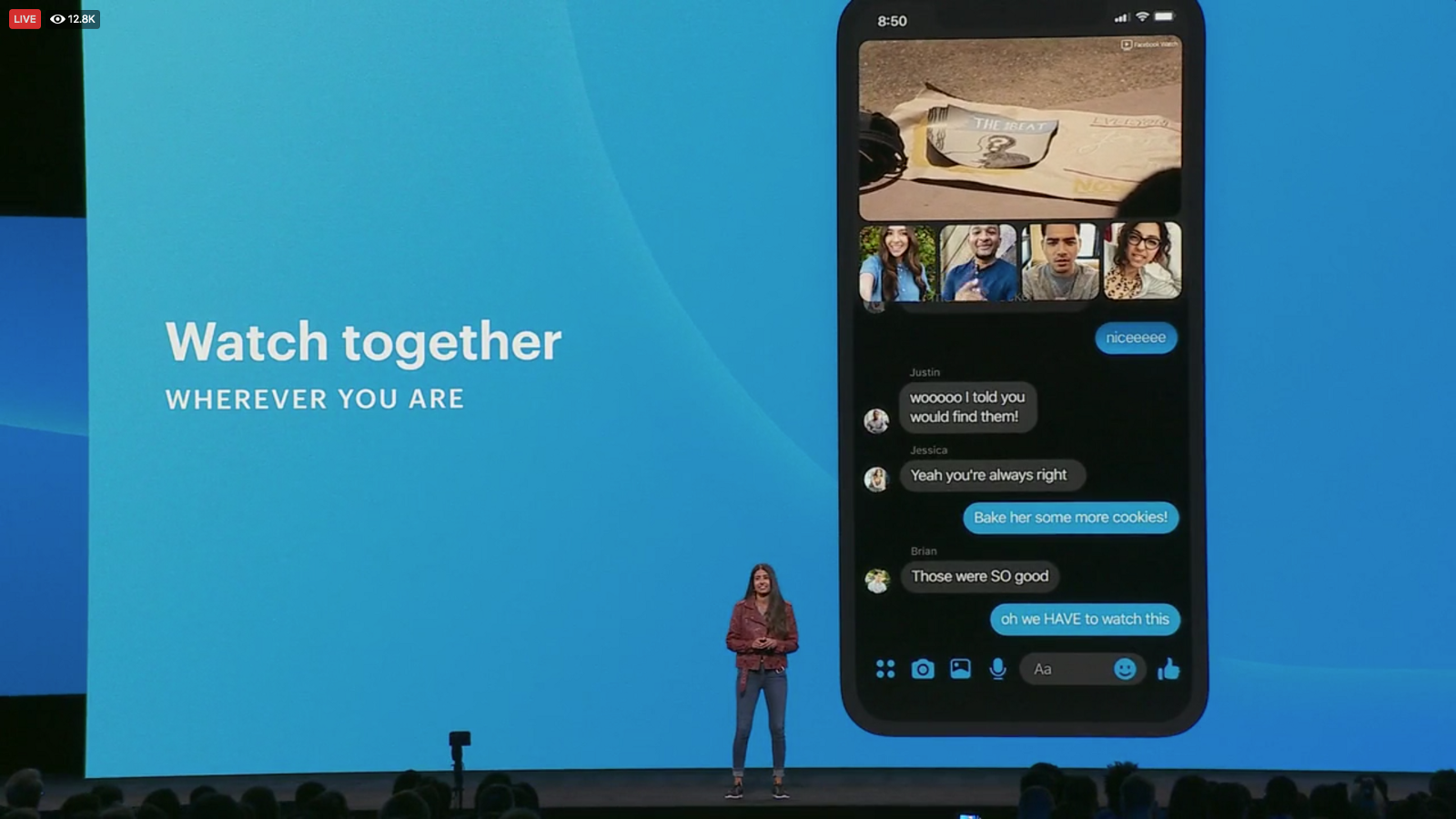
In addition, Portal will add support for Amazon Prime Video as it doubles-down on Alexa integrations. While this partnership is unlikely to go further than this, and there’s no ad opportunity (yet) on Prime Video, this is no doubt a win-win partnership that extends the reach of Amazon’s OTT video service while adding a nice feature to Portal. This update came after Facebook had already added YouTube support to Portal last fall. Given that Portal has a bigger screen and is designed for hands-free video calls, it seems very plausible that the co-viewing feature could be introduced to Portal sooner or later in order to further build out its functionality.
Overall, this new feature will offer Facebook another shot at making Facebook Watch a video destination that users would go to consume video content and potentially more video ads too to offset the decline in attention on videos in the News Feed. It is unclear whether Facebook has the kind of content that people will be willing to set time aside to watch together virtually, but even if it fails to take off as a video consumption facilitator, it could potentially be reworked into social shopping tool that allows friends to shop online together via Messenger or Instagram.
Consolidating Messaging Platforms
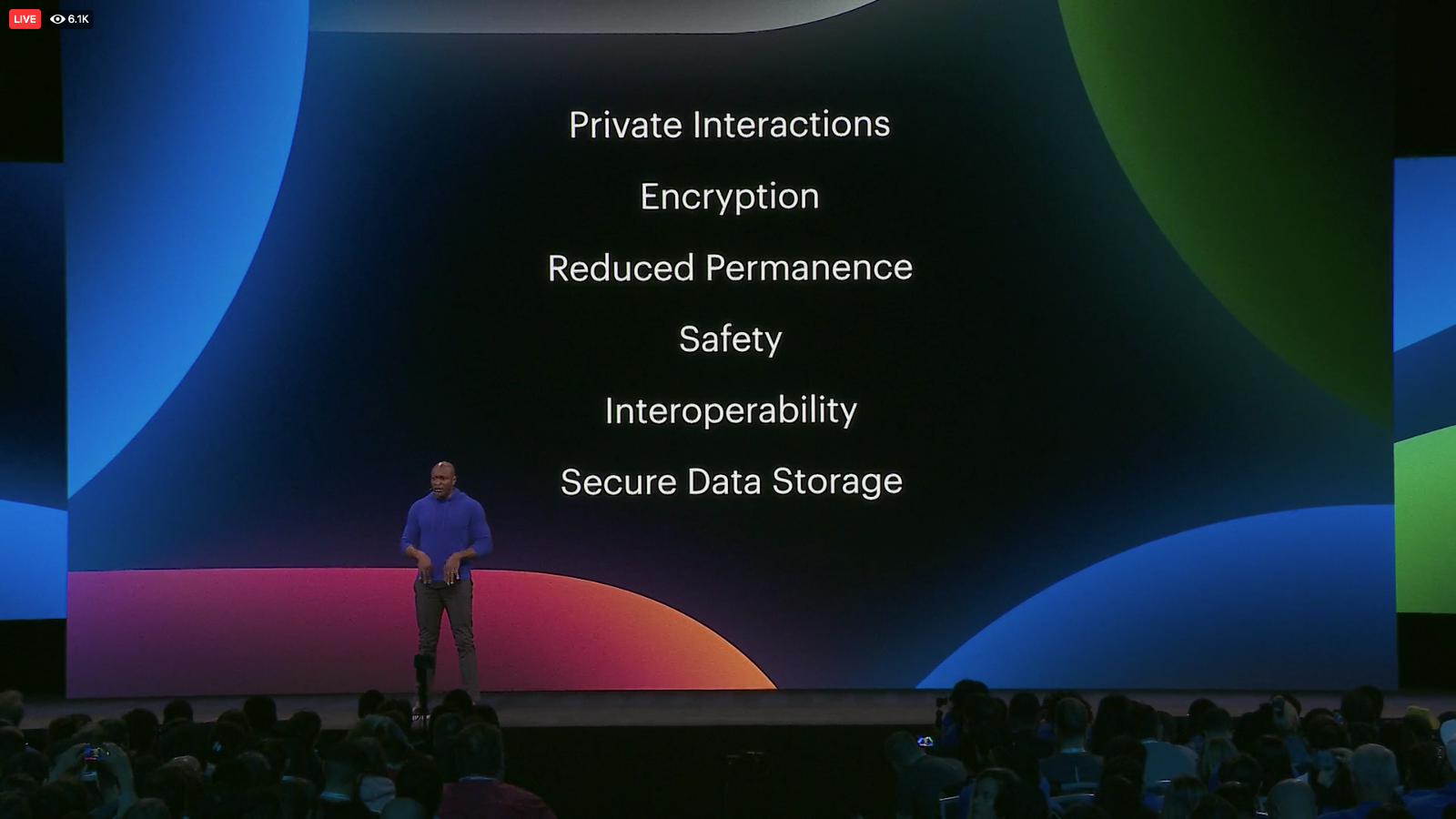
Beyond new designs and features, Facebook also dropped some strong hints of its rumored intention to consolidate the backend infrastructure of its messaging platforms. Throughout the keynote, interoperability between the messaging apps is mentioned to drive home the idea that users will be able to communicate across every one of Facebook’s messaging apps, no matter which device they are using. To that end, Messenger got a new, full-function desktop app that will take it fully cross-platform, and its mobile version also received a redesign that will make it smaller in size and faster in speed.
In a similar vein, Facebook has also announced WhatsApp and Messenger calls will be integrated into Portal, the Alexa-equipped video calling device it launched last fall to intense skepticism. Now, Facebook has decided to roll out Portal in international markets, starting with Canada and Europe, so it makes sense to add WhatsApp support given the app’s international popularity.
In addition, Facebook also announced it will add more Alexa support to Portal later this year, including the ability to get news briefings and control smart home devices via Alexa. Curiously, there was no mention of a digital assistant that Facebook is confirmed to be developing for Portal and Oculus devices, which could just be due to the readiness of their own voice assistant.
Overall, Facebook is definitely making early moves to consolidate Facebook Messenger, Instagram, and WhatsApp under the justification of ensuring interoperability and improving the user experience. Some analysts have pointed out that consolidating the Messenger apps would allow Facebook to preemptively deter potential regulatory mandates that could force it to break up its product portfolio on antitrust grounds, and that certainly seems like the case here. Regardless of Facebook’s motives, however, brands should be able to benefit from the improved interoperability and use Facebook’s trio of apps to reach consumers across platforms down the line.
What Brands Need To Do
In response to Facebook’s latest announcements, smart brands should get ahead of the impending changes to the Facebook experiences and adjust their social strategies to reflect the changing user behaviors. Specifically, brands should:
- Continue to use Facebook’s ad products for the News Feed, since it’s not going to disappear overnight and still commands a significant amount of attention, but also pay attention to Stories and figure out how to tweak your ad creative to fit this mobile-native format.
- Leverage the shift from public posting to small-group chats to establish a more intimate connection with consumers and foster a strong fan community on Facebook apps.
- Make use of the many new social commerce features to shorten the purchase funnel and sell directly to customers.
- Explore AR’s place in your mobile ad creative to see if it can add value to the user experience, and explore VR for potential enterprise solutions.
- Consider developing quality branded content to take advantage of the organic buzz that social co-viewing of video content could generate if this feature takes off.
- Develop a channel-agnostic communication strategy to better serve customers across messaging and social platforms in a consistent manner.
If you are keen to learn more about Facebook’s latest announcements and what they all mean for your brand, or just want to chat about how to prepare for the next paradigm shift in general, send us an email at hello@mediabrands.com
